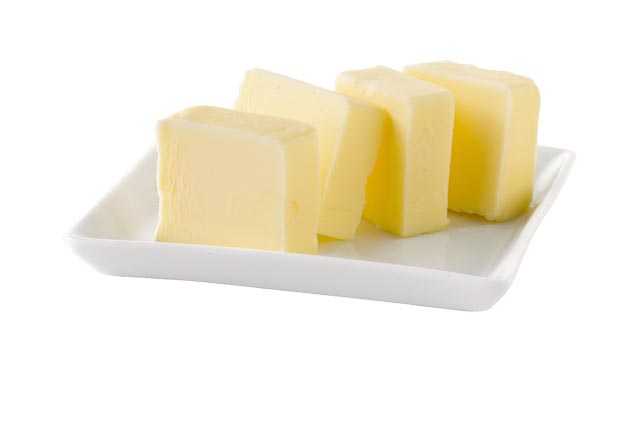A guide to the amount (and types) of fat you should eat each day
1. Saturated Fats
So how much and what kinds of fat should you be eating? Expert guidelines suggest that 20 to 30 percent of your daily calories should come from fats, and no more than 10 percent from the saturated variety. Based on a diet of 1,800 calories a day, that’s between 40 and 60 grams of fat daily. Follow these suggestions to keep your portions in control.
Many of us know saturated fats as “bad” fats, but new research has led experts to question whether they are linked to heart disease, as previously thought. And one study even found that certain saturated fats can be metabolized by your body faster than others, which means they are rarely stored as flab.
Try:
1 tablespoon butter (salted) (12 g fat, 102 cal)
1 tablespoon coconut oil (14 g fat, 117 cal)
8 ounces reduced-fat milk (2 percent) (5 g fat, 122 cal)
3 ounces cooked ground beef, 85 percent lean (13 g fat, 212 cal)
If a fat is solid at room temp, it’s likely saturated.
2. Polyunsaturated Fatty Acids (PUFAs)
These fats tend to be liquid at room temperature, like oils. PUFAs can help reduce the risk for type 2 diabetes and heart disease by helping improve cholesterol.
Try:
1 tablespoon safflower, corn, sunflower, soy, cottonseed, peanut, or other vegetable or nut oil (14 g fat, 120 cal)
1 ounce dry-roasted sunflower seeds (14 g fat, 165 cal)
PUFAs are often in plant-based foods.
3. Monounsaturated Fatty Acids (MUFAs)
Eating this form of unsaturated fat can help improve cholesterol levels.
Try:
1/4 avocado (7 g fat, 80 cal)
10 large green olives (4 g fat, 40 cal)
1 tablespoon peanut butter (8 g fat, 94 cal)
MUFAs may steady blood sugar.
4. Omega-3 Fatty Acids
These may protect against cardiovascular disease. “Getting sufficient omega-3s is tough,” says Blaue. You’d have to eat salmon three times a week to get 500 milligrams per day of O-3s, the amount needed to reap the heart benefits.
Try:
3 ounces cooked salmon (4 g fat, 114 cal)
1 can sardines (3.75 ounces) in oil (11 g fat, 191 cal)
1 ounce walnuts (about 14 halves) (18 g fat, 185 cal)
Fish oil may fight body inflammation.
5. Omega-6 Fatty Acids
To help decrease the risk of dying from coronary disease, “people should get a 1-to-1 ratio of omega-6 fats to O-3s,” says Blaue. Otherwise, our bodies can metabolize O-6s in a harmful way. “Most American diets,” she says, “have a 20-to-1 ratio of O-6s to O-3s.”
Try:
1 tablespoon margarine (11 g fat, 101 cal)
2 tablespoons Caesar salad dressing (17 g fat, 163 cal)
1 tablespoon almond butter (9 g fat, 98 cal)
O-6s can help you absorb more vitamins from food.
Source
Image credits: kraftcanada.com












